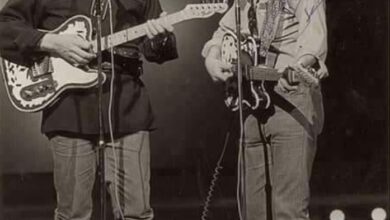Sonny Bono’s Songwriting Genius: The Story Behind ‘Little Man’
“Little Man,” released in 1966 by Sonny & Cher, exemplifies the duo’s talent for merging folk rock with pop, creating a unique and appealing sound that resonated with mid-1960s audiences. Written by Sonny Bono, Cher’s husband and musical collaborator, “Little Man” marked a departure from their earlier hits like “I Got You Babe,” showcasing a more whimsical, European-inspired style.
The song is characterized by its distinctive accordion melody, lending it a folk flavor that complements the duo’s harmonizing vocals. This catchy arrangement contributed to the track’s international success, with “Little Man” reaching the top 10 in the UK and performing well across European markets, highlighting its widespread appeal.
Lyrically, “Little Man” tells a charming story about a humble individual who is cherished and admired. Sonny Bono’s songwriting ability shines through in this narrative, offering a heartfelt and straightforward message that resonates with listeners. The song’s upbeat melody and playful quality made it a favorite among fans, reinforcing the duo’s reputation for creating memorable and engaging music.
By the time “Little Man” was released, Sonny & Cher had already established themselves as a prominent musical duo. Their rise to fame in the mid-1960s was marked by a series of successful singles that highlighted their harmonious vocals and distinctive style. Cher’s contralto voice, combined with Sonny’s baritone, created a sound that was both recognizable and widely appealing, blending elements of folk, rock, and pop.
The duo’s success was also fueled by their public persona. As a married couple, Sonny & Cher’s on-stage chemistry and off-stage dynamic contributed to their media presence and popularity. Their personal and professional relationship captivated audiences, further enhancing their appeal and contributing to their prominence in the music industry.
“Little Man” not only solidified Sonny & Cher’s place in popular music but also demonstrated their versatility and ability to innovate within their genre. The song’s success was a testament to their continued relevance and popularity during the 1960s, helping to sustain their career and influence in the years that followed.





